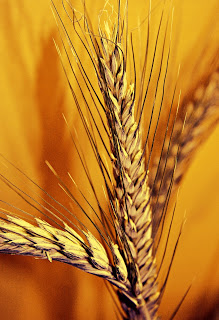

| Visitors Now: | |
| Total Visits: | |
| Total Stories: |

| Story Views | |
| Now: | |
| Last Hour: | |
| Last 24 Hours: | |
| Total: | |
Natural GMOs Part 154. Analysis of the bread wheat genome using whole-genome shotgun sequencing : Nature : Nature Publishing Group
The bread — and barley — of life (Nature Editor’s Summary)
Two groups in this issue [of Nature] report the compilation and analysis of the genome sequences of major cereal crops — bread wheat and barley — providing important resources for future crop improvement. Bread wheat accounts for one-fifth of the calories consumed by humankind. It has a very large and complex hexaploid genome of 17 Gigabases. Michael Bevan and colleagues have analysed the genome using 454 pyrosequencing and compared it with diploid ancestral and progenitor genomes. The authors discovered significant loss of gene family members upon polyploidization and domestication, and expansion of gene classes that may be associated with crop productivity.
Barley is one of the earliest domesticated plant crops. Although diploid, it has a very large genome of 5.1 Gigabases. Nils Stein and colleagues describe a physical map anchored to a high-resolution genetic map, on top of which they have overlaid a deep whole-genome shotgun assembly, cDNA and RNA-seq data to provide the first in-depth genome-wide survey of the barley genome.
Summary of Wheat genome paper:
Bread wheat (Triticum aestivum) is a globally important crop, accounting for 20 per cent of the calories consumed by humans. Major efforts are underway worldwide to increase wheat production by extending genetic diversity and analysing key traits, and genomic resources can accelerate progress. But so far the very large size and polyploid complexity of the bread wheat genome have been substantial barriers to genome analysis. Here we report the sequencing of its large, 17-gigabase-pair, hexaploid genome using 454 pyrosequencing, and comparison of this with the sequences of diploid ancestral and progenitor genomes. We identified between 94,000 and 96,000 genes, and assigned two-thirds to the three component genomes (A, B and D) of hexaploid wheat. High-resolution synteny maps identified many small disruptions to conserved gene order. We show that the hexaploid genome is highly dynamic, with significant loss of gene family members on polyploidization and domestication, and an abundance of gene fragments. Several classes of genes involved in energy harvesting, metabolism and growth are among expanded gene families that could be associated with crop productivity. Our analyses, coupled with the identification of extensive genetic variation, provide a resource for accelerating gene discovery and improving this major crop.
See also
New Slice of Wheat Genome Could Help Feed Growing Global Population
By Katherine Harmon | November 28, 2012 | Sci Am Website
2012-11-29 20:20:53
Source: http://gmopundit.blogspot.com/2012/11/natural-gmos-part-154-analysis-of-bread.html
Source:



